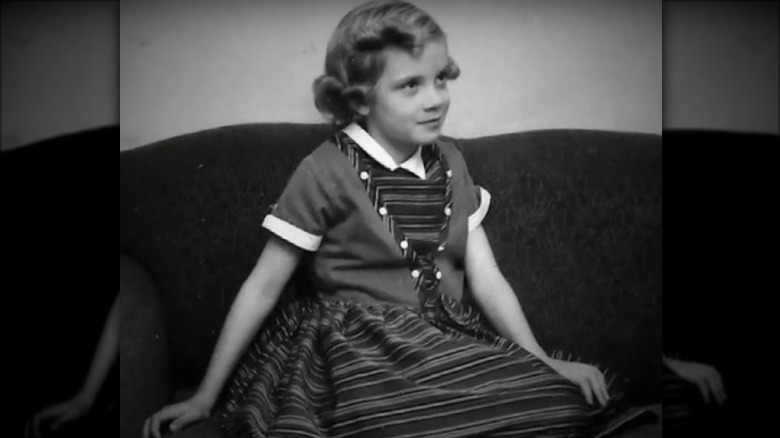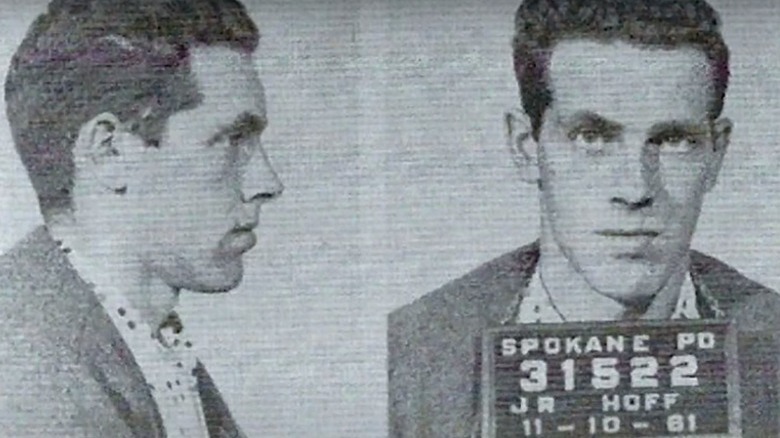How Advances In DNA Analysis Finally Solved Washington's Oldest Cold Case
Candy Rogers was only 9 years old when she went missing on March 6, 1959 (via People). According to KREM, the fourth-grader was out selling Camp Fire mints in her neighborhood in Spokane, Washington when she vanished. Rogers was a part of the Camp Fire Girls, an organization that is similar to the Girl Scouts. It's reported that she was selling the candy as a part of a fundraiser. Hours later, Rogers had failed to return home and an extensive search ensued (per The Daily Beast). Boxes of the cookies were later found on the street but there was no trace of the young girl.
The Spokane Police Department writes that both authorities and locals joined the search, to no avail. At one point, the U.S. Air Force also got involved and provided a helicopter. Sadly, a crash occurred when the helicopter struck some power lines, which resulted in the death of three airmen.
As explained by Rogers' cousin, Joanne Poss, the family at first was under the impression that she had lost her way but was probably okay (via The Spokesman-Review). Tragically, the truth was much more heinous than they could ever believe.
Candy Rogers' remains were found weeks later
According to The Spokane Police Department, two airmen were hunting in the forest 15 days after Rogers' disappearance when they came across a pair of girl's shoes. A day later, a subsequent search of the area uncovered Rogers' body seven miles away from her home (via The Spokesman-Review). People reports that the 9-year-old had been sexually assaulted and strangled. Her body had been crudely hidden in the woods. Poss expressed total shock when she found out that her young cousin had been brutally murdered. Although authorities made the case their priority, they had very little to go on.
The Daily Beast explains that several tips led nowhere, and forensics were virtually non-existent in 1959. Additionally, sex offender registries did not exist. Despite this, there were a few suspects, including Alfred Graves and Hugh Bion Morse. Both men were locals who had been violent towards women, and Graves specifically had a record for assaulting children (per another article from The Spokesman-Review). Oddly, Graves committed suicide soon after Rogers' body was discovered. DNA later cleared Morse in 2001 and there was never enough evidence to prove that Graves was the killer. The case stayed cold for decades until genetic genealogy changed everything in 2021.
It took 62 years for the case to be solved
People explains that when Rogers' body was found, there was semen on her clothes. The investigators made sure to safeguard the sample. KREM explains that they put the specimen in a jar. This small detail ensured that the sample stayed viable. If they had placed it in a plastic bag, the DNA could have easily been ruined. The Spokane Police Department writes that although the case occurred in 1959, they never forgot about Rogers and they wanted to ensure that her senseless murder would be solved one day. In 2021, the Washington State Patrol Crime Lab sent the sample to a DNA lab in Texas.
According to The Daily Beast, the company, Ortham, uncovered that the DNA belonged to one of three brothers. All of them had lived in Spokane but were now dead. However, only one of them, John Reigh Hoff, had a child. KXLY reports that authorities contacted his daughter, Cathie Hoff, and asked her to submit a DNA sample. She happily obliged. The police stated that "The results showed it was 2.9 million times more likely that Hoff's daughter's DNA was related to the recovered specimen than the general population." They promptly exhumed Hoff's body for another DNA sample, which proved that he was indeed Candy Rogers' murderer, over six decades after her death (via People).
Who was John Reigh Hoff?
Per The Spokesman-Review, Hoff was only 19 (other reports say he was 20) when he brutally assaulted and murdered Rogers. USA Today writes that he lived in the same area as she did. When he was 17, a troubled Hoff joined the military. However, 1959 marked the beginning of his violent crimes. The Spokane Police Department reports that after Rogers' murder, he assaulted another woman in 1961. Hoff took off her clothes, tied her, and then proceeded to strangle her. The modus operandi was very similar to the way Rogers was killed.
This time, his victim survived and Hoff was subsequently jailed for 6 months for the crime. After his release, he was discharged from the military. Hoff also eventually got married (via a different article from The Spokesman-Review). He worked as a salesman, in a lumberyard, and in a meatpacking plant. In 1971, Hoff committed suicide when he was 31 years old. His daughter, Cathie, stated, "He was evil, he was evil, it was an escape in a way from it" (per KXLY).
No one suspected John Reigh Hoff
Despite Hoff's criminal past, those who knew him were completely unaware that he had murdered Rogers (per The Spokesman-Review). In fact, one of Rogers' cousins, Judy Tierney, lived next door to Hoff for years. Tierney even assisted in the disposal of the aftermath of Hoff's suicide, not knowing that he had been the one who murdered her cousin. Tierney died before DNA proved that he was the killer, but her daughter states that she would have been horrified to discover the truth. As for his daughter, Cathie, she also had no idea her father had murdered the young girl (via KXLY). She later expressed her shock and apologized to Rogers' family.
Hoff was buried in the same cemetery as Rogers but was moved to another burial site by his daughter after he was identified as the killer. KREM reports that Rogers' parents died without ever knowing who killed their daughter. Although Hoff could never face justice, authorities noted that they at least had a name for the remainder of Rogers' relatives. Simply put, it's the closest thing to closure they will receive. Rogers' family hopes to make a scholarship in her honor. Additionally, they went on to thank Spokane Police for never giving up hope on solving the case.
Several other cases have been solved using genetic genealogy
Rogers' murder is not the only one that has been solved using genetic genealogy. Several cases throughout the country have applied this technology to solve decades-old crimes. Most famously, ABC News writes, DNA evidence led to the identity of the "Golden State Killer" when it was sent to a genealogy database. The killer, Joseph DeAngelo (seen above), was later put on trial and sentenced to life in prison in 2020 for crimes he committed in the 1970s and 1980s (via CNN). Denver7 reports that several cold cases in Colorado from the 1980s and 1990s have recently been solved using genetic genealogy.
According to NPR, the 1956 murder of a young couple in Montana was solved in 2021 when investigators tested preserved sperm cells. This led to the DNA profile of the killer's relatives, which ultimately revealed the identity of the killer 65 years later. In 2022, the 1964 murder of a 9-year-old girl in Pennsylvania was also solved using genealogy, per UPI. The hope is that this technology will eventually be used to solve crimes that go back before the 1950s to give families the semblance of closure that they deserve.





